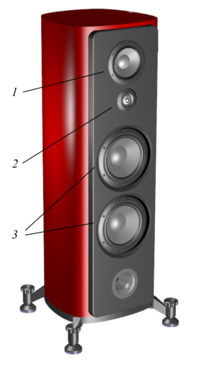
Photo from wikipedia
The electronic transport in low-dimensional materials is controlled by quantum coherence and non-equilibrium statistics. The scope of the present investigation is to search for the origins of negative-differential resistance (NDR)… Click to show full abstract
The electronic transport in low-dimensional materials is controlled by quantum coherence and non-equilibrium statistics. The scope of the present investigation is to search for the origins of negative-differential resistance (NDR) behavior in N-doped ultra-narrow zigzag-edge ZnO nano-ribbons (ZnO-NRs). A state-of-the-art technique, based on a combination of density-functional theory (DFT) and non-equilibrium Green’s function (NEGF) formalism, is employed to probe the electronic and transport properties. The effect of location of N dopant, with respect to the NR edges, on IV-curve and NDR is tested and three different positions for N-atom are considered: (i) at the oxygen-rich edge; (ii) at the center; and (iii) at the Zn-rich edge. The results show that both resistance and top-to-valley current ratio (TVCR) reduce when N-atom is displaced from O-rich edge to center to Zn-rich edge, respectively. After an analysis based on the calculations of transmission coefficient versus bias, band structures, and charge-density plots of HOMO/LUMO states, one is able to draw a conclusion about the origins of NDR. The unpaired electron of N dopant is causing the curdling/localization of wave-function, which in turn causes strong back-scattering and suppression of conductive channels. These effects manifest themselves in the drawback of electric current (or so called NDR). The relevance of NDR for applications in nano-electronic devices (e.g., switches, rectifiers, amplifiers, gas sensing) is further discussed.
Journal Title: Scientific Reports
Year Published: 2019
Link to full text (if available)
Share on Social Media: Sign Up to like & get
recommendations!